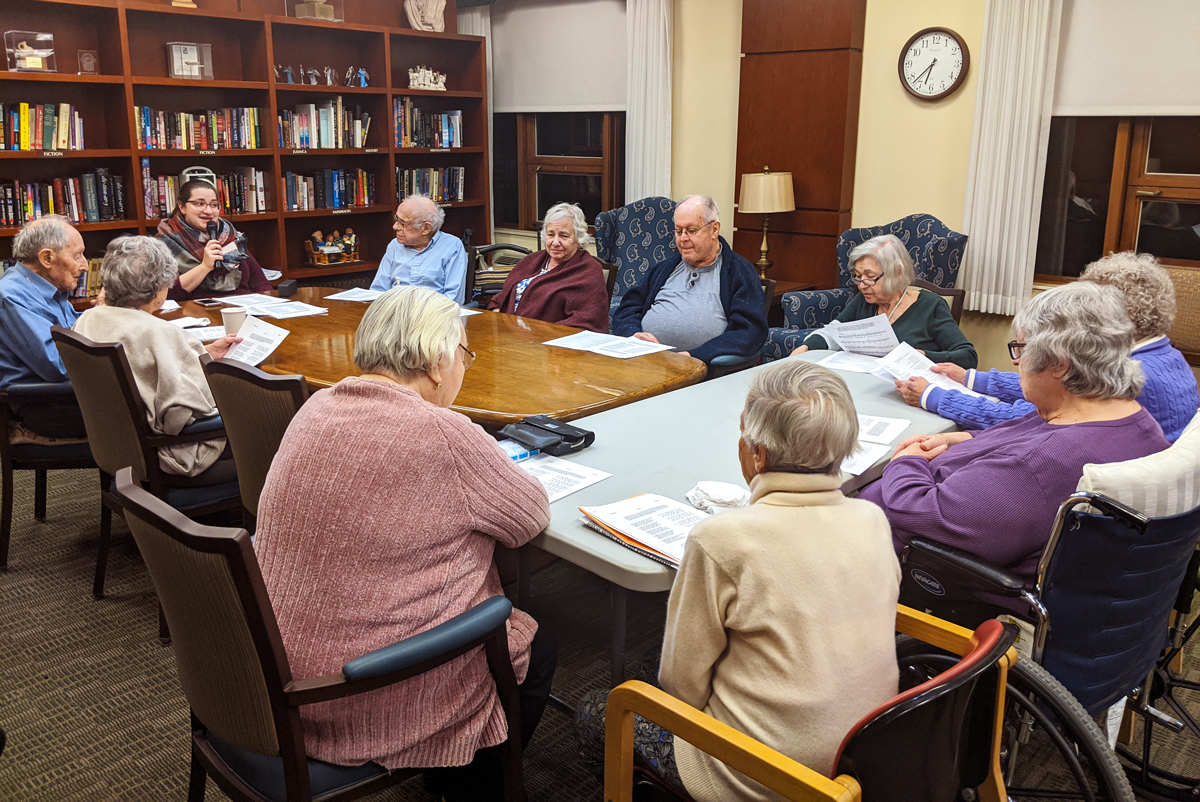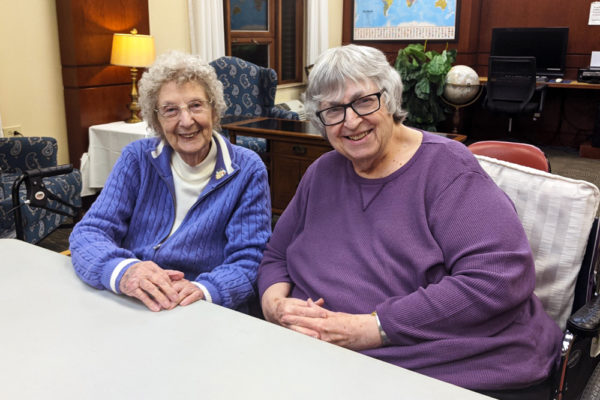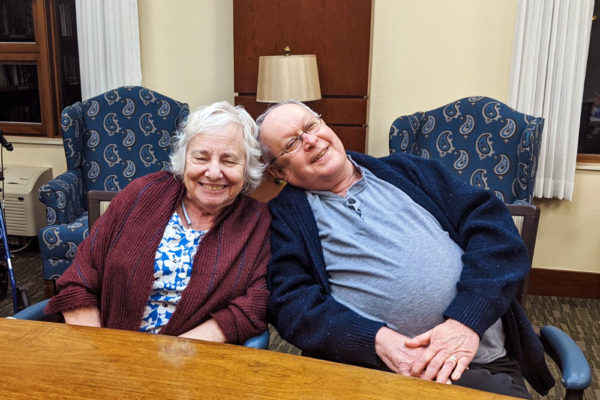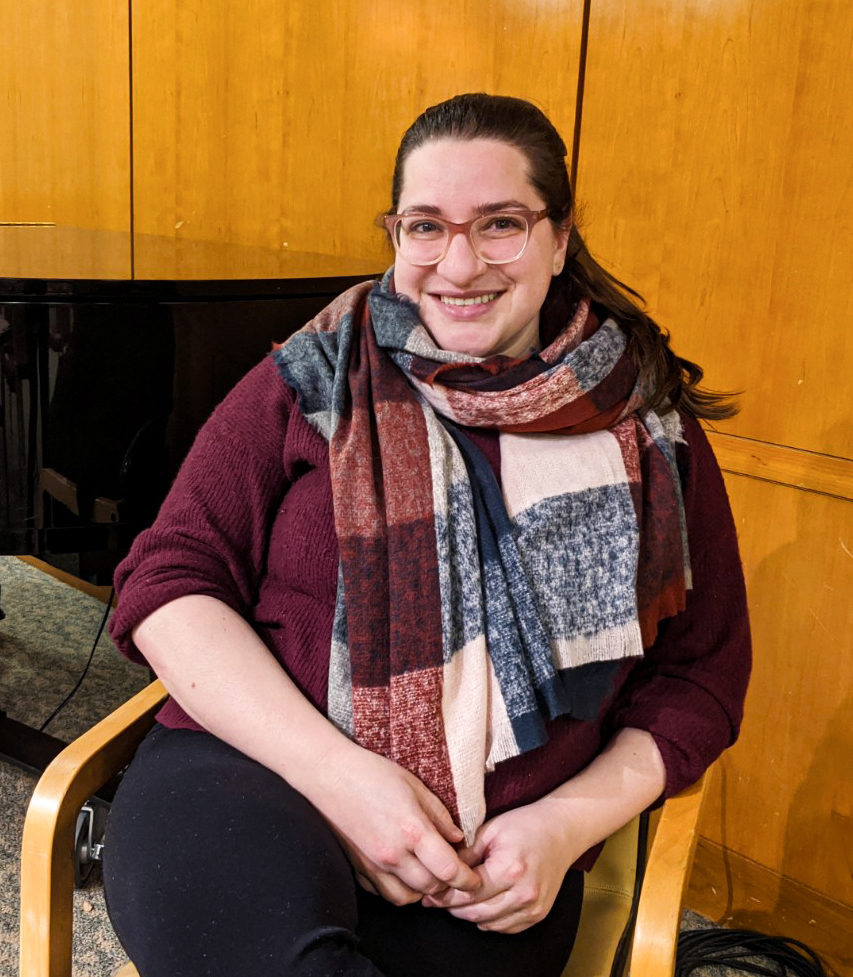Take a walk through the halls of The Selfhelp Home and you’re bound to hear at least one Yiddish word spoken amongst residents, and that’s no Bubkis! Residents at The Selfhelp Home asked for more Yiddish programming, stemming from a common love of speaking in Yiddish and hearing it as children. Residents excitedly gather in the library twice a month on Thursday evenings for The Yiddish Hour with Shifra Whiteman.
The program was originally led by Benna Kessler but when Benna had to step away she knew just who to ask to take her place! Benna and Shifra have been life-long friends due to their moms connecting when they were in college. Benna and Shifra have both been immersed in Yiddish culture since they were born, thanks to both of their moms’ love of the language and mission to carry the folk tradition throughout the years. Originally from New York, Shifra’s parents immersed her into various Jewish traditions and cultures at a very young age. She attended an orthodox preschool and spent the Jewish holidays and shabbat evenings with orthodox families. Shifra’s parents sent her to Solomon Schechter School of Queens. During many summers, she attended Camp Young Judea Sprout Lake and Camp tel Yehudah which were pluralist zionist camps. Her family attended family camps where they created memories together with speaking, singing, and exploring their love for the Yiddish culture. This intergenerational connection has kept Yiddish very alive in Shifra’s heart today.
Shifra is married and has recently given birth to a beautiful 6 month old son, Mendel. Shifra and Mendel are both frequent visitors at The Selfhelp Home for our JBaby events! Shifra admits “At first I didn’t know what to expect, but I knew it wasn’t going to be a grammar focused class. It would be more of a focus on folklore, stories, and music. It’s not meant to be a homework-type class, more of a time to gather and appreciate the language and culture together.” Shifra ‘s approach to sharing Yiddish culture with our community primarily focuses on music and some poetry due to the resident’s requests. The residents have asked for more music to be shared, most likely because of the emotional benefits it brings older people, especially if pleasant memories are triggered while singing the songs.
Below is an example of a piece the class just learned:
Anyone who wishes can be young,
Years have no meaning,
Old ones can, can, can be children
Of a new free time.
Yung iz yeder, yeder, yeder ver es vil nor,
Yorn hobn keyn batayt,
Alte kenen, kenen, kenen oych zayn kinder
Fun a naye fraye tsayt.
The “Yugnt himn” ( Youth hymn) was written by the Vilna lpoet and partisan Shmerke Kaczerginski and dedicated to the youth club in the ghetto. This song represents the common partisan songs that had an upbeat melody and encouraging lyrics which inspired young people to storm in song and work together toward a new and free age.
Sometimes The Yiddish Hour classes have a theme depending on the time of year. For Hanukkah, Shifra incorporated obscure Yiddish folk songs so that they offer a new level of enjoyment for the group. Mostly, she chooses obscure Yiddish folk songs whether lullabies, melodies of the Holocaust, or other topics to bring material that the residents may not have heard before. Shifra reads both English and Yiddish lyrics to the group, and then they listen to the songs in Yiddish together and sing along if they choose to. Everyone receives a packet of song names and lyrics that they can take back to their rooms. Usually a core group of 10 residents attend every week, with occasional new visitors that are looking to try something new. It’s a joy to watch the resident’s faces light up as the music plays and the lively discussion ensues.
Most of the residents have a personal story or connection to one of the songs. Shifra recalls, “One resident said I knew that one song, but I forgot what it was called and I’ve been looking for it for years!”
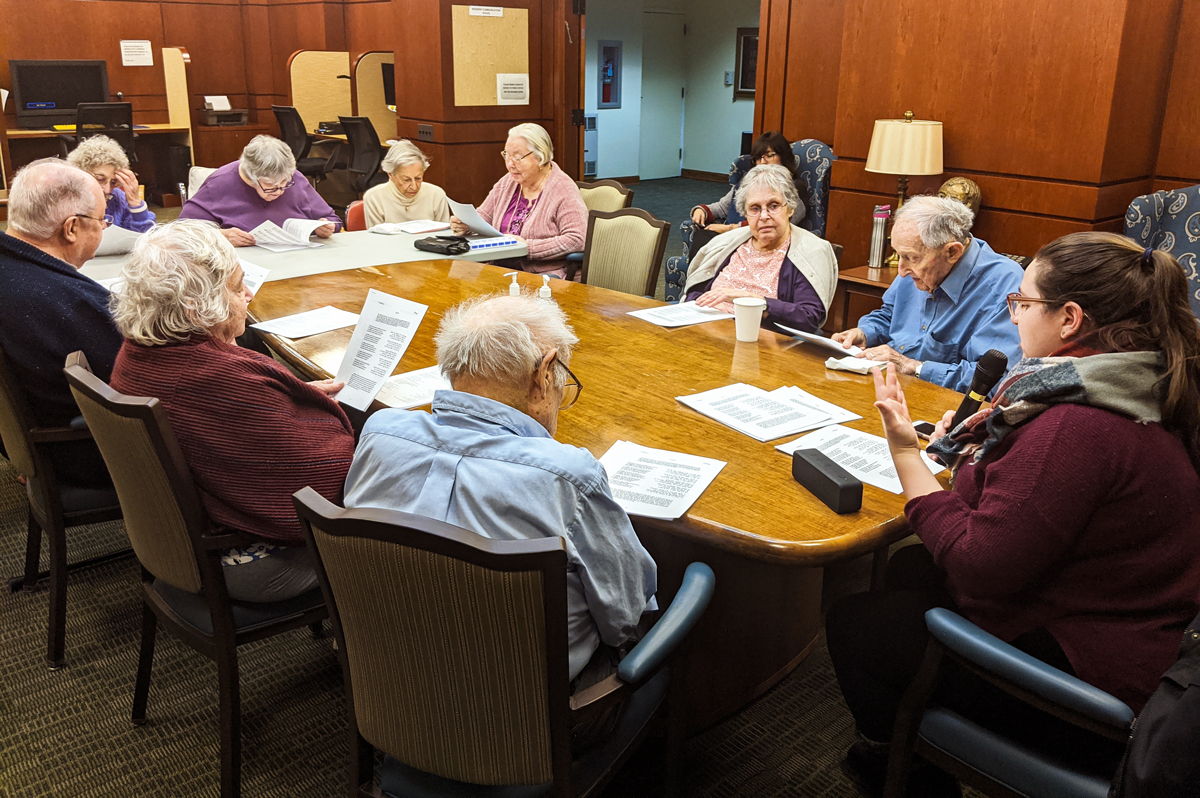
Yiddish culture is still flourishing with over 600,000 speakers worldwide. While first spoken in medieval times in the Rhine, the language grew from a combination of German, Hebrew and local Slavic languages. At one time, over 10 million Jewish people conversed regularly in their homes and daily life. Unfortunately, the Holocast altered the intergenerational love for this distinct language and affinity for Jewish identity. “It was also the language spoken by the majority of Jewish immigrants to the United States in the late 19th and early 20th centuries. In terms of numbers, native Yiddish speakers were the largest population of Jews to settle in this country. Their culture was the dominant culture of American Jewry as well as European Jewry.” Thankfully, the resurgence of Hasidic Jews in today’s culture has infused Yiddish back into popularity. According to the great Hasidic master, Rabbi Schneur Zalman of Laiadi, “music is the pen of the soul.” Hasidic music is similar to Yiddish music because some of it is contemplative and sobering, some of it is upbeat and inspirational, each communicating another perspective of the human experience and the connection between man and God.
Shifra believes, “We are really in a special place in time where the intergenerational interest in the Yiddish language, history, and folk music are aligned.” As opposed to when she grew up, everyone thought Yiddish was a waste of time on a dying language. Now she sees the interest and passion growing because there is a new cycle of the older generation wanting to remember Yiddish and the newer generation yearning for connection to their own personal Jewish history. Her passion allows her to share her knowledge at two non-profits in the city, American Jewish World Service Chicago, and The Workers Circle.
The Selfhelp Home believes incorporating musical and lingual activities for our residents is one of the most engaging ways to stimulate their brain. Music brings their muscle memory to life. Overall, music improves health through enhancing mood, increasing relaxation, better sleep, assists in memory recall, and encourages self-expression. Upcoming concerts and programs are available on the website calendar.


